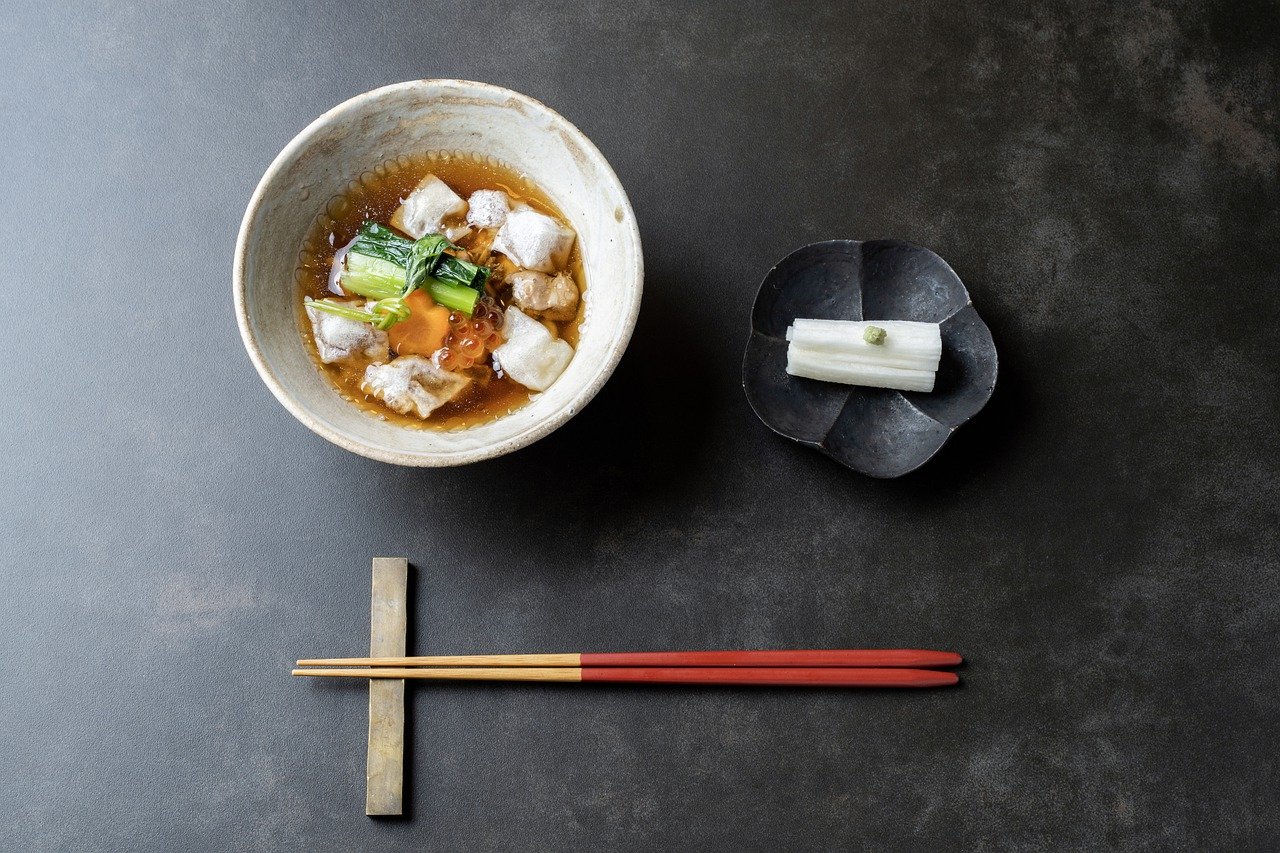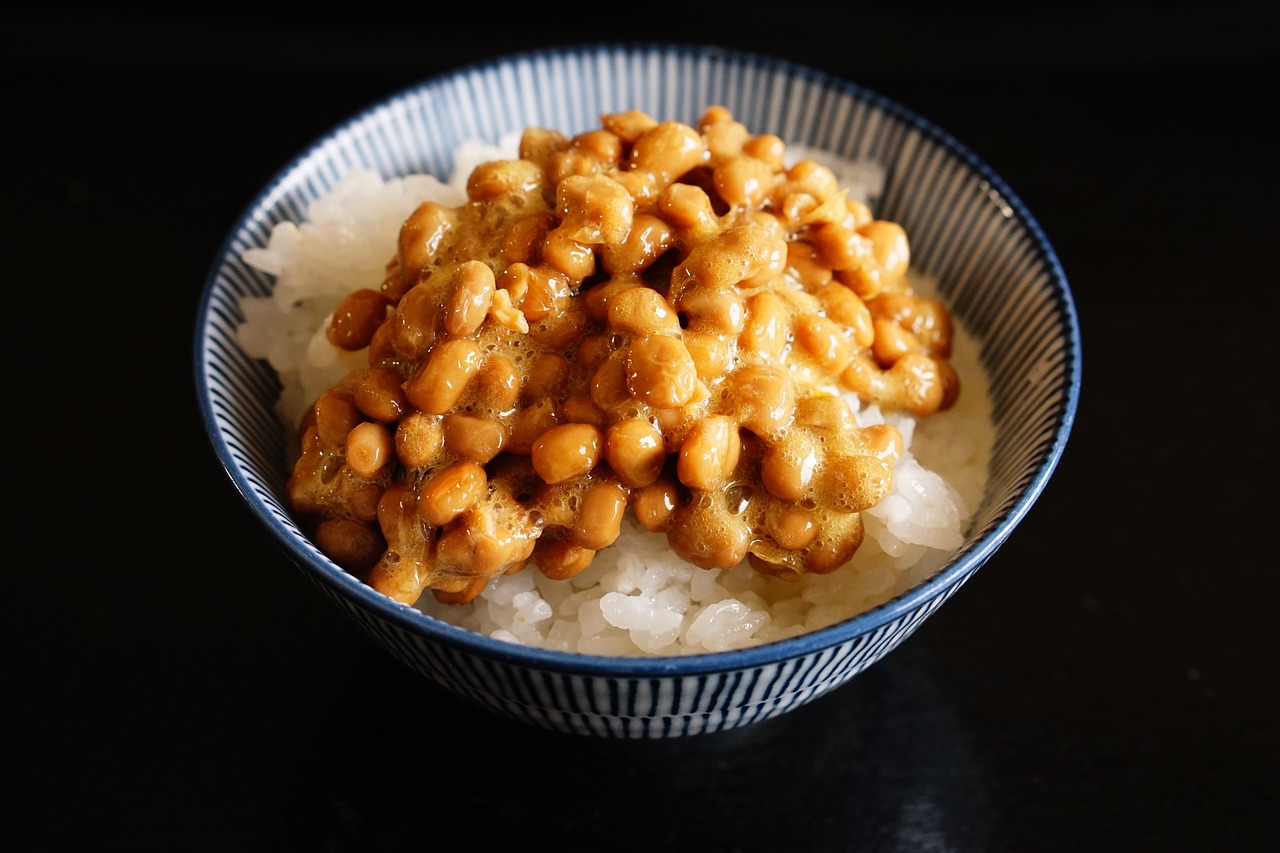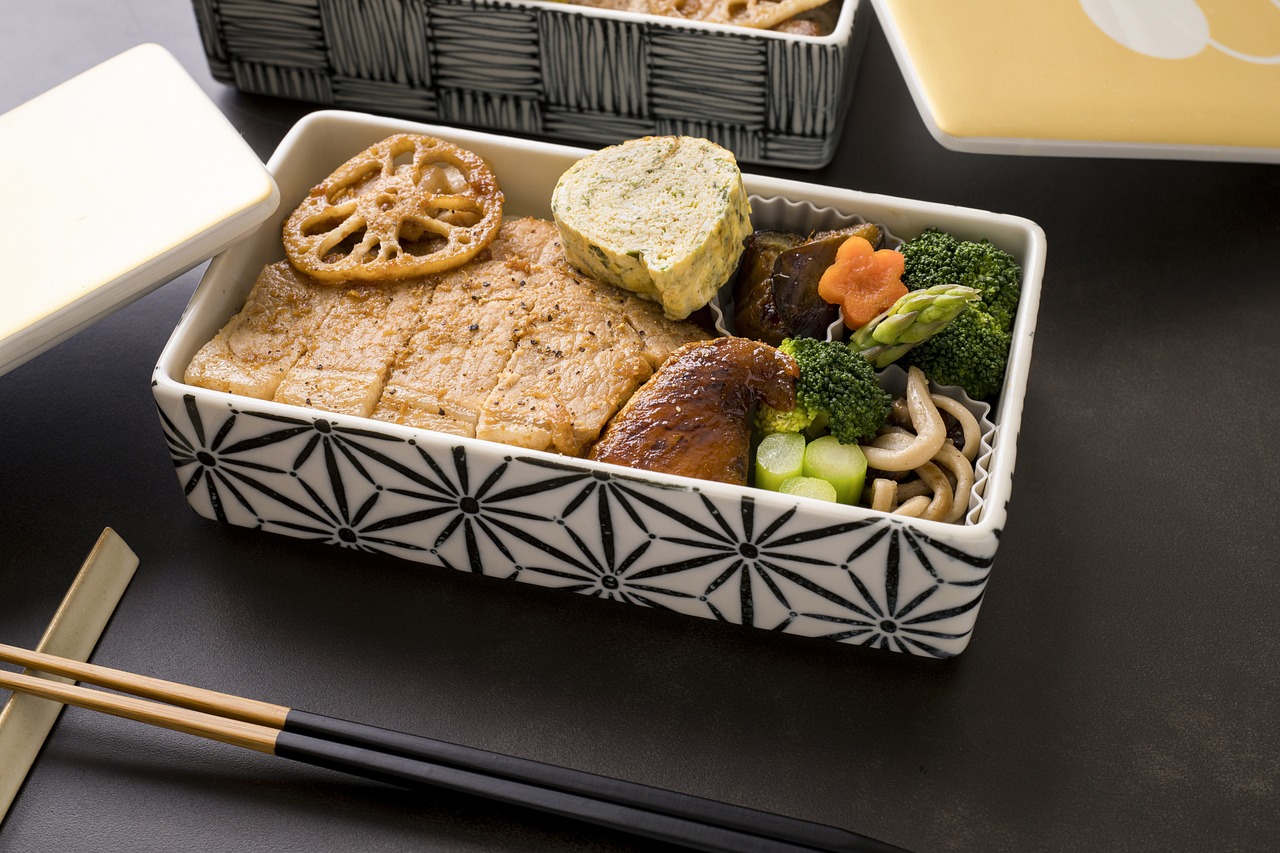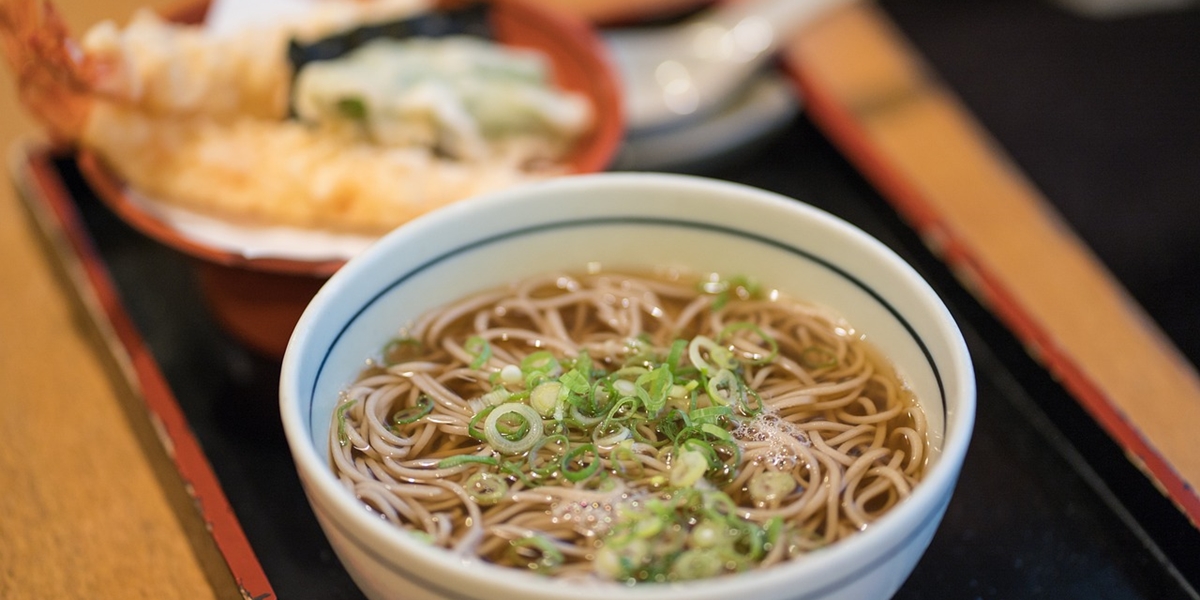Kapanlagi.com - Japanese food is known for its uniqueness that combines simplicity and beauty in every dish. From light yet rich flavors to aesthetic presentations, Japanese cuisine offers an unparalleled culinary experience. In this article, Kapanlagi will discuss in detail the characteristics of Japanese food.
This also includes examples of popular foods and frequently used ingredients. From the world-famous sushi to the warm miso soup, as well as typical ingredients like shoyu and miso that serve as the foundation of many dishes. And knowledge of the characteristics of Japanese food can be useful when visiting Japan.
Let's explore the explanation of the characteristics of Japanese food and discover the charm and philosophy behind the deliciousness of Japanese cuisine that has captivated the hearts of many people around the world.
1. What are the Characteristics of Japanese Food?

Illustration (credit: pixabay.com)
Japanese food has several characteristics that distinguish it from cuisine of other countries. These unique characteristics of Japanese food are not only known for their deliciousness, but also for their healthiness and appealing presentation. Here are some common characteristics of Japanese food:
1. Fresh and High-Quality Ingredients
Japanese food emphasizes the use of fresh and high-quality ingredients, such as fresh fish, vegetables, and rice.
2. Light and Natural Flavors
Japanese food tends to have light and natural flavors. The seasonings used are often minimal to highlight the original taste of the ingredients. Examples include the use of soy sauce (shoyu), miso, and dashi (fish broth).
3. Aesthetic Presentation
Japanese food is known for its highly aesthetic and neat presentation. Each dish is served with attention to detail and balance of colors and shapes.
4.Use of Rice
Rice is a staple in Japanese cuisine. Various rice-based dishes such as sushi, onigiri, and donburi are very popular. Rice has become one of the characteristic features of Japanese food.
5.Variety in Cooking Techniques
Japanese food encompasses various cooking techniques, including steaming, grilling, frying, and raw (such as in sashimi and sushi).
6.Emphasis on Seasons
The characteristic of Japanese food often highlights seasonal ingredients. This is done to ensure that the ingredients used are at their peak freshness and flavor quality.
7.Nutritional Balance
Japanese dishes are usually balanced in terms of nutrition, with a good combination of protein, carbohydrates, and vegetables. Foods like bento boxes demonstrate this balance with a variety of dishes in one container.
8.Fermentation
Many Japanese foods use fermentation techniques, such as miso (soybean paste), shoyu (soy sauce), and natto (fermented soybeans).
9.Green Tea
Green tea is one of the distinctive features of Japanese food. This is because green tea or ocha is often served with meals, and matcha (green tea powder) is used in various desserts.
10.Seafood-based Dishes
As an island nation, seafood plays a prominent role in Japanese cuisine. Fish, clams, and seaweed such as nori and kombu are often used in various dishes.
2. List of Ingredients Used

Illustration (credit: pixabay.com)
The characteristic of Japanese food can also be seen from the unique raw materials used.These ingredients are the basis of many Japanese dishes and reflect the principles of Japanese cuisine that emphasize freshness, quality, and balance of flavors.Here is a list of typical raw materials in Japanese food along with their explanations:
1.Shoyu (Soy Sauce)
Soy sauce made from fermented soybeans, wheat, water, and salt.Soy sauce is widely used in various dishes as a flavor enhancer.Usually, this ingredient is used as a seasoning for sushi, sashimi, soup, stir-fries, and dipping sauces.
2.Miso
Fermented paste made from soybeans, salt, and koji (fermented fungus). There are various types of miso, such as white miso (shiromiso) which is sweeter and red miso (akamiso) which has a stronger flavor.Usually, this ingredient is used in miso soup, sauces, marinades, and as a seasoning.
3.Mirin
Sweet rice wine with low alcohol content, used to add sweetness and enhance the appearance of food.Usually, this ingredient is used in teriyaki sauce, marinades, and dishes such as nimono (simmered dishes).
4.Sake
Alcoholic beverage made from fermented rice.In addition to being consumed, sake is also used as a cooking ingredient.Usually, this ingredient is used in marinades, sauces, and as a ingredient to remove fishy odor from fish.
5. Nori
Dried seaweed that is usually in thin sheets. Nori is rich in minerals and widely used in Japanese cuisine. Typically, this ingredient is used to wrap sushi, onigiri, and as a topping for various dishes.
6. Kombu
A type of seaweed used to make dashi (basic stock) that provides umami flavor. Usually, this ingredient is used in the preparation of dashi, soups, and nimono.
7. Bonito Flakes (Katsuobushi)
Shaved smoked and fermented bonito fish. Katsuobushi is one of the main ingredients in making dashi. Usually, this ingredient is used as a component for dashi, as a topping for takoyaki, okonomiyaki, and other dishes.
8. Daikon
A large white radish with a mild and slightly spicy flavor. Daikon is often used both raw and cooked. Typically, this ingredient is used as a pickle (tsukemono), in broths, salads, and as a garnish for sashimi.
9. Shiitake
A mushroom with a strong umami flavor. Shiitake can be used fresh or dried. Usually, this ingredient is used in soups, broths, stir-fries, and as a topping for various dishes.
10. Wakame
Wakame is a type of seaweed commonly used in soups and salads. Wakame has a chewy texture and a light flavor. It is typically used as an ingredient in miso soup, salads, and stews.
11.Gari
Gari is thinly sliced and pickled ginger. It is often served as a condiment for sushi. It is usually used as a palate cleanser between bites of sushi.
12.Wasabi
Wasabi is a root vegetable that is grated to produce a green paste with a distinctive spicy flavor. Wasabi is commonly used as a seasoning. It is usually used as a condiment for sushi and sashimi, as well as in sauces and dressings.
13.Matcha
Matcha is a powdered green tea made from finely ground tencha tea leaves. Matcha has a rich and umami flavor, as well as a bright green color. It is typically used in tea ceremonies, as well as in various foods and drinks such as matcha ice cream, cakes, lattes, and mochi soup.
3. Examples of Japanese Specialties

Illustration (credit: pixabay.com)
Usually, each characteristic of Japanese food not only offers a unique taste, but also showcases aesthetics and principles that prioritize balance, quality of ingredients, and beauty in presentation.
For KLovers who are curious about what they are, here are some examples of Japanese food that reflect the characteristics of Japanese food as mentioned in the first list:
1. Sushi
A famous dish consisting of vinegar rice and usually served with raw fish (such as tuna or salmon), vegetables, and seaweed. Examples of sushi types include nigiri, maki, and sashimi.
2. Tempura
Vegetables or seafood dipped in a light batter and fried until crispy. Tempura is usually served with special dipping sauce.
3. Ramen
Wheat noodles served in broth (can be meat or fish-based) with various toppings such as pork, eggs, seaweed, and vegetables.
4. Sashimi:
Slices of fresh fish or other seafood served without rice, often with soy sauce and wasabi.
5. Bento
Japanese lunch box consisting of rice, fish or meat, and vegetables in small portions neatly arranged.
6.Miso Soup
Soup made from miso (fermented soybean paste) usually containing tofu, seaweed, and spring onions.
7.Takoyaki
Balls of batter filled with octopus pieces, cooked in a special mold and served with takoyaki sauce, mayonnaise, and bonito flakes (shaved dried fish).
8.Okonomiyaki
Savory pancake made from flour and cabbage, which can be added with meat, seafood, or other ingredients, then cooked on a griddle and served with okonomiyaki sauce and mayonnaise.
9.Onigiri
Rice balls or triangles wrapped in nori (dried seaweed) and often filled with various ingredients such as salmon, umeboshi (pickled plum), or tuna mayo.
10.Unagi Kabayaki
Grilled eel with a sweet sauce made from soy sauce, served on top of white rice.
11.Matcha Ice Cream
Ice cream made from green tea powder, giving a unique and slightly bitter taste.
12. Natto
Fermented sticky soybeans with a strong taste, usually eaten with rice.
Those are some explanations of the characteristic features of Japanese food that KLovers can know. Japanese food combines simplicity and beauty, creating an unforgettable culinary experience through quality ingredients and authentic flavors.
(kpl/dhm)
Disclaimer: This translation from Bahasa Indonesia to English has been generated by Artificial Intelligence.















